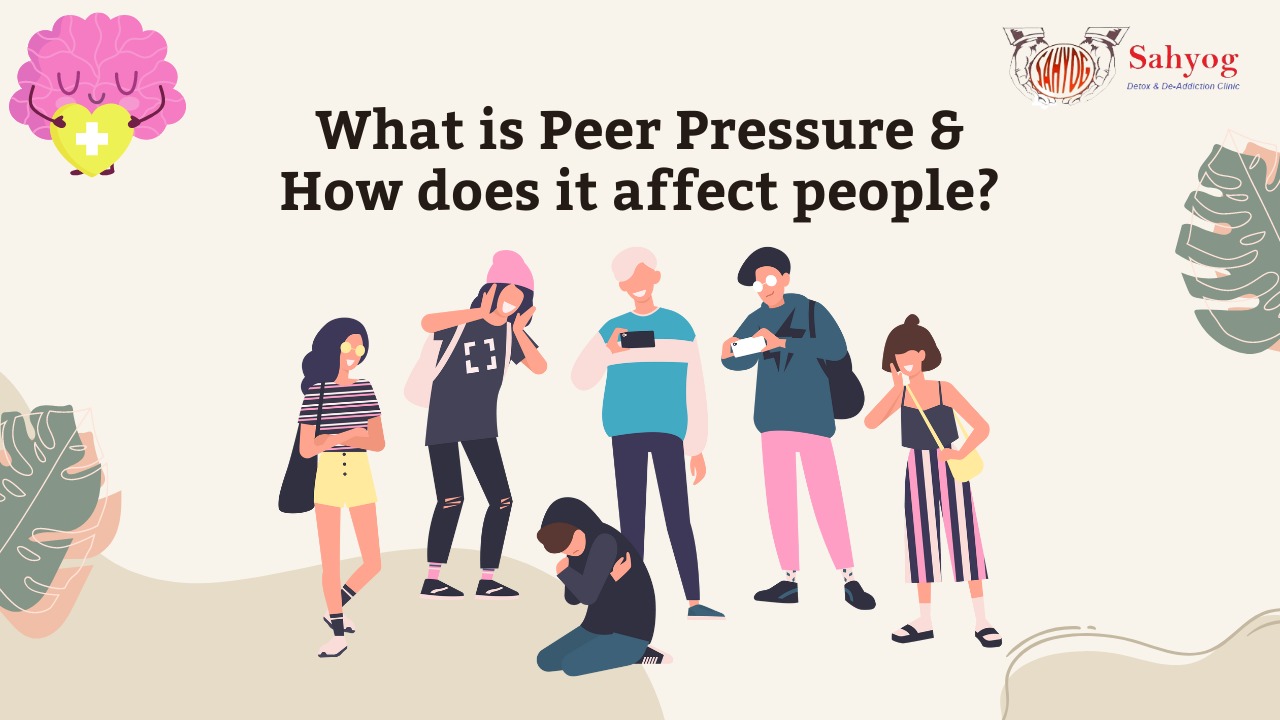What is Peer pressure and how does it affect people?
Peer pressure is a common phenomenon in social interactions, particularly among young people. It refers to the influence that peers have on each other’s behavior, attitudes, and beliefs. The pressure to conform to group norms and expectations can be subtle or overt, and it can have positive or negative effects on individuals.
This article aims to define peer pressure, explore its different types and sources, and examine its effects on people’s behavior, emotions, and identity.
What is Peer Pressure?
Peer pressure is the social influence that peers have on each other’s attitudes, behaviors, and beliefs. It can be defined as the pressure that an individual feels to conform to the expectations or standards of a peer group. This pressure can be direct or indirect and can involve both positive and negative behaviors.
Types of Peer Pressure
Peer pressure can be classified into different types based on the nature of the influence and the motivation behind it. Here are some of the most common types of peer pressure:
Positive Peer Pressure: This type of peer pressure involves encouraging positive behavior or attitudes, such as doing well in school, participating in sports or clubs, volunteering, or making healthy choices. Positive peer pressure can have a beneficial effect on individuals, as it can motivate them to adopt positive habits and attitudes.
Negative Peer Pressure: This type of peer pressure involves encouraging negative behaviors or attitudes, such as smoking, drinking, doing drugs, skipping school, or engaging in risky behavior. Negative peer pressure can have a detrimental effect on individuals, as it can lead to harmful behaviors and negative consequences.
Direct Peer Pressure: This type of peer pressure involves explicit requests or demands to conform to the group’s expectations or behaviors. Direct peer pressure can be overt or subtle, but it is usually clear and explicit.
Indirect Peer Pressure: This type of peer pressure involves implicit or subtle cues to conform to the group’s expectations or behaviors. Indirect peer pressure can be difficult to detect, as it is often conveyed through nonverbal cues, gestures, or actions.
Sources of Peer Pressure
Peer pressure can come from different sources, including peers, family, media, and society. Here are some of the most common sources of peer pressure:
Peers: Peers are the most common source of peer pressure, as they are the ones who are most likely to influence each other’s behavior, attitudes, and beliefs. Peer pressure can come from friends, classmates, teammates, or any other group of peers.
Family: Family can also exert peer pressure on individuals, particularly children and adolescents. Family members can pressure each other to conform to family values, traditions, or expectations, which can affect their behavior and attitudes.
Media: Media can also influence peer pressure, as it can shape individuals’ attitudes and perceptions of social norms and expectations. Media can include television, movies, music, social media, or any other form of mass media.
Society: Society can also exert peer pressure on individuals, as it can shape social norms and expectations. Society can include cultural, religious, or political norms and values.
Effects of Peer Pressure
Peer pressure can have both positive and negative effects on individuals, depending on the nature of the influence and the individual’s response to it. Here are some of the most common effects of peer pressure:
Behavioral Effects: Peer pressure can affect individuals’ behavior by influencing them to engage in positive or negative behaviors. Positive peer pressure can motivate individuals to engage in healthy habits or activities, while negative peer pressure can lead to risky or harmful behaviors.
Emotional Effects: Peer pressure can also affect individuals’ emotions by influencing their self-esteem, self-confidence, and sense of identity. Positive peer pressure can increase individuals’ sense of belonging and self-worth, while negative peer pressure can lead to feelings of insecurity, shame, or guilt.
Identity Effects: Peer pressure can also affect individuals’ sense of identity by influencing how they perceive themselves and others. Positive peer pressure can help individuals develop a strong sense of identity and purpose, while negative peer pressure can lead to a loss of identity and a lack of direction.
Cognitive Effects: Peer pressure can also affect individuals’ cognitive processes, such as their decision-making, judgment, and critical thinking skills. Positive peer pressure can help individuals make informed and responsible decisions, while negative peer pressure can lead to impulsive or irrational choices.
Social Effects: Peer pressure can also affect individuals’ social relationships, such as their friendships, romantic relationships, or family relationships. Positive peer pressure can strengthen social connections and foster supportive relationships, while negative peer pressure can lead to conflict, betrayal, or isolation.
Teens and Peer Pressure
Peer pressure is a common experience for teenagers, as they are at an age where they are seeking independence and exploring their identities. Teenagers often look to their peers for guidance, validation, and social acceptance, which can make them vulnerable to peer pressure.
Teenagers can experience peer pressure in various ways, including:
- Conforming to social norms: Teenagers may feel pressure to conform to the social norms of their peer group, which can involve adopting specific fashion styles, music tastes, or behaviors.
- Engaging in risky behaviors: Teenagers may feel pressure to engage in risky behaviors such as drinking alcohol, smoking, doing drugs, or engaging in sexual activity.
- Bullying and teasing: Teenagers may feel pressure to bully or tease others to fit in with their peer group, even if it goes against their own values or beliefs.
- Academic pressure: Teenagers may feel pressure to achieve academically, even if it means compromising their mental health or well-being.
The effects of peer pressure on teenagers can be both positive and negative. Positive peer pressure can encourage teenagers to engage in healthy behaviors, such as exercising regularly, eating a balanced diet, or pursuing their hobbies and interests. Positive peer pressure can also foster a sense of belonging and social support, which can promote positive mental health outcomes.
However, negative peer pressure can have a significant impact on teenagers, especially if they feel compelled to conform to the expectations of their peer group. Negative peer pressure can lead to risky behaviors, mental health issues, low self-esteem, and a loss of individual identity. Teenagers may also feel isolated and excluded if they do not conform to the norms of their peer group.
Overcoming Peer Pressure: Strategies for Resisting Negative Influences
Peer pressure is a common experience for individuals of all ages, and it can be difficult to resist the negative influences of peers. However, it is important to learn how to overcome peer pressure and make decisions that align with our values and goals. Here are some strategies for resisting negative peer pressure:
- Build self-confidence: One of the best ways to resist negative peer pressure is to build self-confidence. This can be done by focusing on our strengths, developing positive self-talk, and setting personal boundaries. By building self-confidence, we are less likely to feel the need to conform to the expectations of our peers.
- Be assertive: Assertiveness is an important skill for resisting negative peer pressure. This involves standing up for ourselves and our values in a respectful and assertive way, rather than giving in to the expectations of our peers. By being assertive, we can communicate our own opinions and values while still maintaining positive relationships with our peers.
- Seek out supportive relationships: Having supportive relationships with friends, family, or mentors can help us resist negative peer pressure. These individuals can provide guidance, encouragement, and validation, which can help us feel more confident in our decisions and less influenced by negative peer pressure.
- Set goals and priorities: Setting goals and priorities can help us stay focused on what is important to us, rather than feeling pressure to conform to the expectations of our peers. By identifying our goals and priorities, we can make decisions that align with our values and help us achieve our desired outcomes.
- Seek help if needed: If we find ourselves struggling to resist negative peer pressure, it is important to seek help from a trusted adult, such as a parent, teacher, or counselor. These individuals can provide guidance and support as we navigate challenging situations and make decisions that align with our values.
Frequently Asked Questions (FAQs)
Q1. What is peer pressure?
Peer pressure is a social phenomenon where individuals feel the need to conform to the expectations and behaviors of their peers in order to fit in and be accepted.
Q2. Why is peer pressure considered negative?
Peer pressure is considered negative when it leads individuals to engage in risky or unhealthy behaviors that can have negative effects on their health, well-being, relationships, and personal goals.
Q3. What are some examples of positive peer pressure?
Examples of positive peer pressure include encouragement to exercise, study, or engage in activities that promote health and well-being.
Q4. How can peer pressure affect mental health?
Peer pressure can affect mental health by leading individuals to engage in behaviors that increase stress, anxiety, and depression, such as substance use, bullying, or exclusionary behaviors.
Q5. How can parents help their children resist negative peer pressure?
Parents can help their children resist negative peer pressure by teaching them self-confidence, setting clear boundaries and expectations, and providing supportive relationships and guidance.
Q6. Can adults experience peer pressure?
Yes, adults can experience peer pressure in a variety of contexts, such as at work or in social situations.
Q7. What are some strategies for resisting negative peer pressure?
Strategies for resisting negative peer pressure include setting clear boundaries, building self-confidence, seeking supportive relationships, and being assertive.
Q8. How can peer pressure affect academic performance?
Peer pressure can affect academic performance by leading individuals to prioritize socializing over academic responsibilities, resulting in poor grades and missed opportunities.
Q9. What are some common forms of negative peer pressure in adolescence?
Common forms of negative peer pressure in adolescence include substance use, bullying, exclusionary behaviors, and pressure to engage in sexual activity.
Q10. How can individuals distinguish between positive and negative peer pressure?
Individuals can distinguish between positive and negative peer pressure by considering whether the behavior in question promotes health, well-being, and personal growth or poses a risk to physical or mental health, relationships, and personal goals.


